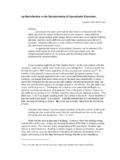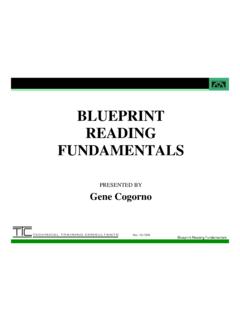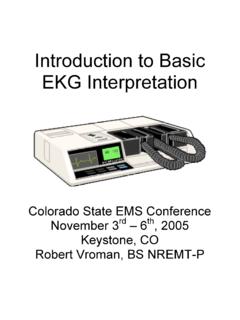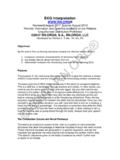Transcription of Soil Test Interpretation Guide - APAL Agricultural …
1 soil Test Interpretation Guide Contents 1. soil test Interpretation Guide introduction .. 3 2. soil Texture .. 4 3. 4 4. Electrical Conductivity (EC) .. 6 5. Effective Cation Exchange Capacity (ECEC) .. 11 6. Organic Carbon (%) Walkley and Black .. 11 7. Nitrogen .. 12 8. What Phosphorus test do I use? .. 13 Phosphorus (Colwell) .. 15 PBI (Phosphorus Buffering Index) .. 15 Phosphorus (Olsen) .. 17 Phosphorus (Bray 2) .. 18 Phosphorus (DGT) .. 18 Total Phosphorus .. 20 Still not sure which soil test you should use? Test them out yourself .. 20 9. Sulphur (KCL & MCP) .. 21 10. Potassium (Colwell) .. 22 11. Exchangeable Cations (Ca, Mg, K, Na) .. 24 12. Chlorides .. 25 13. Aluminium .. 26 14. Trace elements (DTPA) .. 26 15. Extractable Boron .. 26 16. References: .. 27 1. soil test Interpretation Guide introduction APALs soil test Interpretation Guide summarises the Lab methods undertaken and also provides a general Interpretation Guide .
2 APALs tests and Interpretation is based on up to date research and literature for Australian soils, promoting best industry practice. If there are any doubts around the Interpretation of results be sure to speak to APAL or your local agronomist/advisor in regard to your specific region and soil type. Crop specific ranges are displayed in APALs soil reports. APAL have invested heavily into generating crop specific soil ranges for a broad range of crops, working closely with research organisations and consultants to review the latest up to date research and literature in soil nutrition. APAL work closely with our clients to determine the correct testing requirements for specific regions and crops. When considering soil test methods the key point to address: Use a test that has being as recently as possible correlated with plant yield response for your crop and soil type, where data is available to determine your crop response to the fertiliser being applied.
3 For further information on lab methods please refer to: For a full range of available tests please refer to APAL service Guide : For further information on sampling instructions please refer to: soil testing is a tool to assess the amount of plant available nutrients in the soil . A tool to identify limitations to production, which can include pH, soil structure, sodicity, salinity, low nutritional status or excessive nutritional status. The yield of a plant is limited by a deficiency of any one essential element, even though all others are present in adequate amounts 1 The Interpretation of soil test data will be based on crop yields, stocking rates and production targets. Taking into account the nutritional status of the soil , ranges are generally based around the critical value required, which determines the value where 90-95% of maximum production or yield potential occurs.
4 The confidence interval around the critical value indicates the reliability of the estimate, the narrower the range the more reliable the data. This data has being collated from fertiliser trials, where various fertiliser rates are applied and the crop yield response measured. Adequate levels are generally higher than the critical value to allow for field error and natural variation. The following outlines Interpretation data based on published research and the APAL database. Compiled from experience and observations from over 15 years of data and including input from local experts and agronomists in the field. 2. soil Texture soil texture is dependent on how much sand, silt and clay is present. soil texture will influence the physical and chemical properties of the soil .
5 Soils with a light texture and low CEC are more susceptible to leaching and should be managed by applying smaller quantities of nutrients more frequently. Critical values for some tests will vary with soil texture and soil type. Lab texture method- Hand bolus Field generated textures by suitable operators is considered the most accurate method of determining soil texture Field texturing techniques. McDonald RC, Isbell RF, Speight JG, Walker J, Hopkins MS (1998) Australian soil and Land Survey Field Handbook. (Australian Collaborative Land Evaluation Program: Canberra). 3. pH Methods: pH (water) 4A1- 1:5 soil /water extract pH (CaCl2) 4B1- 1:5 M calcium chloride extract pH is a measure of the soils acidity and alkalinity that gives an indication of the activity of the hydrogen ion (H+) and hydroxyl ion in (OH-) in a water solution.
6 The more hydrogen ions held on the exchange complex, the greater the soils acidity. Solutions which contain equal concentrations of H+ and OH-ions are said to be neutral and have a pH of Acidic soils can restrict microbial activity; reduce the availability of essential nutrients and cause aluminum toxicity in the subsurface which retards root growth, restricts access to water and nutrients. Crops will display varying sensitivities to acidity and alkalinity. General desired level pH (water) - ( , ideal) pH (CaCl2) ( , ideal) pH calcium chloride will generally be units lower that pH water. pH (Water) pH Interpretation < Strongly acidic Aluminium (Al) or Manganese (Mn) toxicity Can have Molybdenum deficiencies Ca, Mg, and K deficiency (Due to possible leaching) Reduced microbial activity Moderately acidic Slightly acidic Neutral Slightly Alkaline Moderately alkaline > Strongly alkaline pH (CaCl2) < Strongly acidic Possible Al and Mn Toxicity and Mo Deficiency Moderately high acidic Acceptable for acid tolerant species Moderately acidic Moderately acidic to slightly alkaline Above - Often high in Mg and calcium carbonate > Moderately to strongly alkaline The pHCa test is considered more reliable when assessing acidity and varies less through the season while the pHw is fine for neutral to alkaline soils.
7 PH water readings can increase with winter or spring rains, under dry conditions soluble salts are thought to be higher and therefore depress the pH reading. Acidic and alkaline soils will have effects on the availability of nutrients and soil biological activity. The diagram below indicates the availability of nutrients at various pH, with the widest bar representing availability. Source: Arris Pty Ltd. 4. Electrical Conductivity (EC) Methods: EC 3A1 - 1:5 soil : water extract ECe Estimated EC (from 1:5 soil : water extract using texture conversion factor) ECse Saturated soil extract EC testing is reliable way to assess how salts are affecting plant growth. The EC of soil or water is influenced by the concentration and composition of dissolved salts. Salts increase the ability of a solution to conduct an electrical current, so a high EC value indicates a high salinity level.
8 Generally an EC (1:5) water extract < will not affect plant growth. soil texture influences the degree to which the amount of salt present in the soil will affect plant growth. Therefore the value for EC (1:5) can be converted to an estimated electrical conductivity of a saturation paste (ECe) by multiplying with a texture factor. ECe estimated = EC 1:5 x texture conversion factor. soil Texture Multiplication factor Sand, loamy sand, clayey sand 23 Sandy loam, fine sandy loam, light sandy clay loam 14 Loam, fine sandy loam, silty loam, sandy clay loam Clay loam, silty clay loam, fine sandy clay loam, sandy clay, silty clay, light clay Light medium clay Medium clay Heavy Clay Peat Source: Slavich and Petterson (1993) Criteria ECe (estimated) Low salinity 0 - 2 Sensitive plants affected 2 - 4 Many plants affected 4 -8 Tolerant plants affected 8 -16 High salinity >16 Source: Natural Resources South East.
9 Brian Hughes, David Davenport and Lyn Dohle ECse Saturated soil extract, this test is used by soil surveyors and is regarded as a more accurate measure of soil salinity than EC (1:5). Relative tolerance of crops and pastures to soil salinity (from Herrmann, 1995). Relative tolerance of plants to soil salinity (Source: Rural Solutions SA) Grain crops Pastures Vegetables Fruit Crops 16 16 Puccinellia 15 15 Saltbush (selected species) 10 Barley Tall wheat grass 10 9 9 Canola 8 Cereal rye 8 Triticale Wheat Barley hay soil salinity ECe (dS/m) 7 Perennial ryegrass Date palm 7 6 Safflower Kikuyu 6 Tall fescue Phalaris Zucchini Oats 5 Sorghum Beetroot 5 Strawberry clover Oaten hay 4 Germinating cereals Vetch Broccoli 4 Burr medic Fig, olive Lucerne Tomato Cocksfoot Cucumber Maize Pea 3 Peas, lupins Broad bean 3 Faba beans Sweetcorn Annual medic Potato Walnut, grape Annual clover Lettuce Citrus, pome 2 Carrot, onion Peach, plum 2 Green bean Apricot, almond 1 Strawberry 1 Crop tolerance and yield potential of selected horticultural crops affected by soil salinity.
10 Yield Potential 100% 90% 75% 50% 0% Fruit soil ECe (dS/m) Orange Grape Almond Avocado Grapefruit Peach Apricot Date Palm Plum Strawberry Vegetables Broccoli Bean Cabbage Carrot Cucumber Lettuce Onion Potato Pepper Squash - zucchini Squash - scallop Tomato Irrigated pasture Barley forage Clover, white Clover, strawberry Fescue Lucerne Sorghum This data is a Guide to relative tolerances among crops. Absolute tolerance varies depending upon climate, soil conditions and cultural practices. Source: Brian Hughes (rural solutions SA). Source: Irrigation and Drainage Paper (1989).







